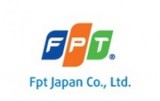VFA says national rice brand key to integration
Successfully achieving a national rice brand that is recognized globally by consumers for a variety of practical reasons is a very difficult task, says the Vietnam Food Association (VFA).
However, said Huynh The Nang, chair of the VFA at a recent conference in Ho Chi Minh City, the rice segment must apply all its assets to achieving such a recognizable national rice brand if it is to successfully integrate into the global economy on a sustainable basis.
At the conference, Mr Nang expressed his dissatisfaction with the lack of investment in promoting a national brand saying he considered it the root cause of lacklustre rice exports this year.
For many years now, he said the rice segment has proven itself a world top exporter in terms of quantity but it has failed to achieve quality and profitability— largely because of lack of branding.
Last year, he said, official statistics showed the country exported 6.6 million tons of rice valued at more than US$2.8 billion in revenue, up 4% year-on-year in quantity but down 4.5% in value.
This year the segment’s rice exports are forecast to decline yet again in value due to climate change causing a prolonged drought and saltwater intrusion throughout many parts of the country.
In addition, he said the lack of water for irrigation has increased disease further contributing to a reduction in the quality of Vietnamese rice and its competitiveness against rice from other countries.
Realizing the risk of strong dependence on certain markets, local rice exporters have tried to expand to new markets in the EU, US, Japan, and Republic of Korea. But these are demanding markets and only 27% of the country’s exported rice meets with their high standards.
Bui Chi Buu, former director of the Institute of Agricultural Science for Southern Vietnam, in turn agreed with Mr Nang, saying that for comparison purposes governments of India and Thailand invest much more in the science of rice development, while the investment in Vietnam is much too low.
He urged the Vietnam government and businesses in the segment to increase their investment in agricultural science to improve the quality of Vietnamese rice.
For his part, Le Van Banh, head of the Department of Agriculture, Forestry and Seafood Processing and Salt Production, underscored quality, branding, and trade promotion are the key factors that will drive an increase in the value of the country’s rice.
In addition, the Vietnam rice segment, he underscored, needs more help from the government, especially the Food Association in developing foreign markets, he said, adding that more assets need to be devoted to instituting new ways to promote trade for rice to match the requirements of each foreign market.
Meanwhile, to boost exports to high-end markets Vietnam should actively invest in improving rice varieties, developing more large-scale fields, build trademarks, and expanding trade promotion programs.
In summary, Huynh The Nang, chair of the VFA, emphasized the nation needs to put in place new value chains aimed at improving rice quality and brand development and committed to begin implementing such a plan yet this year.
VOV
Vietnam, Canada enhance cooperation, connections
Vietnam, Italy seek to further expand economic, investment cooperation
Vitenam, Italy seek to further step up locality-to-locality cooperation
Vietnam, Japan work to materialise comprehensive strategic partnership
Argentina hopes to foster economic, trade, investment collaboration with Vietnam
 Seminar held to promote Vietnam - Algeria economic relations
Seminar held to promote Vietnam - Algeria economic relations
 Vietnam, France enhance transport cooperation
Vietnam, France enhance transport cooperation
 Vietnam, Singapore deepen economic, energy cooperation
Vietnam, Singapore deepen economic, energy cooperation
 Vietnam keen on expanding trade, investment cooperation with Ireland: Minister
Vietnam keen on expanding trade, investment cooperation with Ireland: Minister
 International integration drives Vietnam’s economic growth
International integration drives Vietnam’s economic growth



